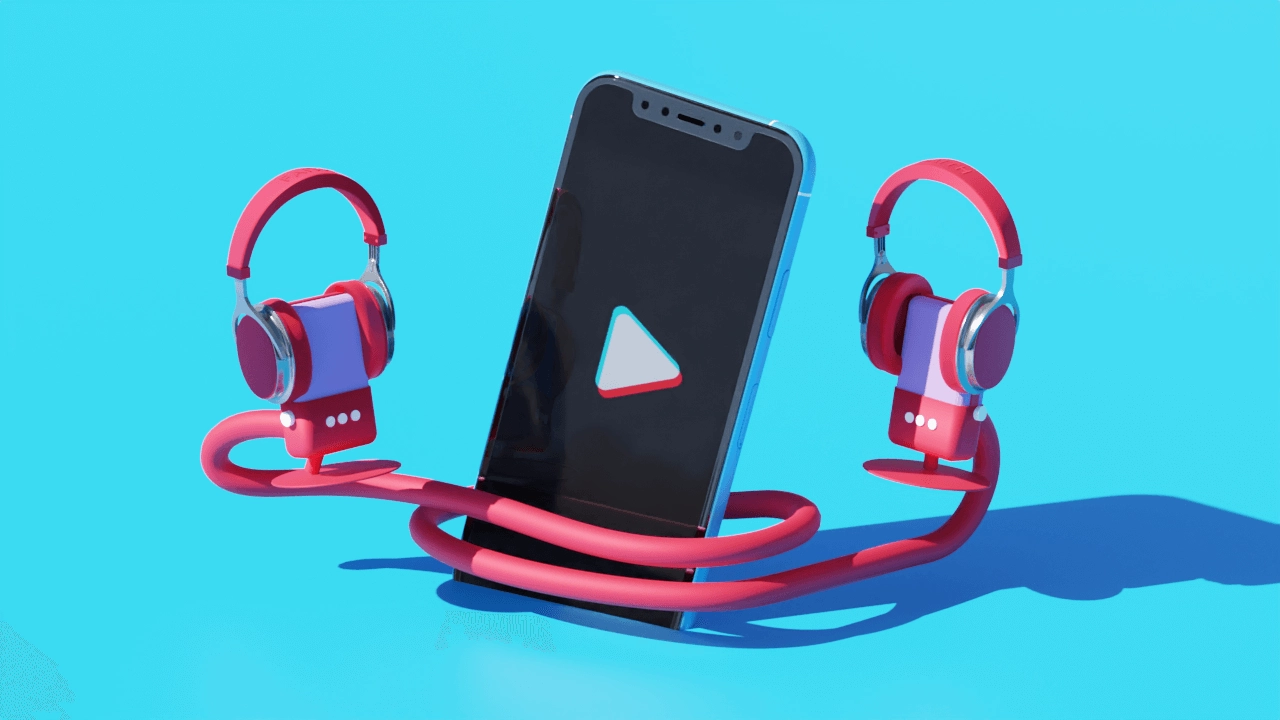If you’ve ever shopped for a TV, you’ve probably seen terms like 1080p, 4K UHD, and HDTV. These all refer to screen resolution, or how sharp or clear an image appears on the display.
Historically, most movies and TV shows were filmed in 1080p, but more and more devices are adopting higher resolutions. Most console video games now are optimized at a 4K resolution. Streaming services like YouTube have begun to adopt 4K videos on the platform. And even remote recording tools like Descript let you capture footage in 4K.
This article covers everything you need to know about 4K resolution, including why it's the industry standard, how to use it, and what to expect from technological advances going forward.
What is 4K resolution?
4K resolution refers to a horizontal display resolution of around 4,000 pixels. The higher pixel count in 4K offers a clearer and more detailed image. This makes it good for TV, gaming, and professional video editing.
Resolution is as old as the television—which means it was first demonstrated in 1927. The term was coined to refer to how images appeared on the screen and at what frequency. The first TVs had only 60 lines of pixels. Since then, media players like TVs and mobile devices have evolved to support different video resolutions, including:
- Standard definition (SD): 640x480 pixels or 480p
- High definition (HD): 1280x720 pixels or 720p
- Full high definition (full HD): 1920x1080 or 1080p
- Quad HD (2K): 2,560x1,440 pixels or 1440p
- Ultra high definition (Ultra HD) or 4K: 3840x2160 pixels
- 8K resolution: 7680x4320 pixels

|
Bear in mind that screen size and aspect ratio aren’t the same thing as video resolution. Aspect ratio refers to the shape of your image (ratio of width to height), while screen size refers to the dimensions of your image in inches (e.g. a 55-inch TV). They have nothing to do with pixel density. You can have a 4K image on a 50 inch or a 90 inch screen—it will still be 4K.
4K resolution: Pros and cons
Advantages of 4K resolution
There are many reasons why video creators and filmmakers create content in 4K. Some of these benefits are:
- Enhanced viewing experience: The biggest advantage to using 4K resolution to shoot or view content is a high-quality viewing experience. With over 8 million pixels in a 4K image, it will be sharper, clearer, and more lifelike than any lower resolution.
- Future-proofing: 4K is still in its early days, and many displays are still in 1080p. If you buy technology with 4K capabilities, there’s no need to upgrade your tech when 4K becomes more mainstream.
- Improved editing and zooming: 4K has so many pixels that it allows you to zoom in much further than lower resolution images without pixelating the image. For example, Ryan Redal’s use of 4K macro photography allows him to zoom in on micro mushrooms on his TikTok channel.
Disadvantages of 4K resolution
Although 4K is gaining in popularity, it’s not always the best choice for everyone. Here are some downsides of using 4K resolution:
- Hardware demands: If you want to watch 4K video content, you'll need hardware that supports the resolution: that is, a 4K computer monitor or laptop screen. While most lower-resolution monitors can downsample 4K to their resolution, viewers won’t get the ultra high-def experience.
- Large file sizes: More pixels means more data, so 4K images and videos will take up a lot more space to store and take longer to upload.
- Limited content availability: Since most people don't have 4K compatible laptops, TVs, or projectors, there's not a lot of purely 4K content available. Most content has a 4K option, but also has a lower resolution version.
4K vs. UHD vs. 1080p resolution
4K and UHD are pretty similar in terms of pixels, and many TVs and monitors will advertise themselves as 4K Ultra HD. But they’re not identical: Although 4K and UHD have the same number of vertical pixels (2160), 4K has 4096 horizontal pixels and UHD has 3840 horizontal pixels.
UHD and 4K are usually used interchangeably on TVs and consumer displays. Only the Digital Cinema Initiatives (DCI) uses a true cinema 4K resolution with the 4096x2160 specification. In other words, UHD will probably be used unless you're shooting on a Hollywood set.
Compared to 4K and UHD, 1080p has fewer pixels with pixel dimensions of 1920x1080. Currently, most social media and streaming services use this resolution.
📹 Read more: Frame rate: Definition and everything you need to know
4K resolution requirements
Viewing a 4K video on your HDTV won't give you a premium viewing experience. Watching something in 4K requires not only 4K content, but also a 4K-compatible device and delivery method.
4K-capable display device
The most obvious thing you’ll need is a device that can show images in 4K resolution, like a 4K TV, 4K monitor, or 4K projector. It also needs to have a refresh rate of at least 60Hz.
Companies like Sony and Samsung have been selling 4K-compatible TVs and UHDTVs since 2012. Nowadays, they even have TVs with OLED and neoOLED technology that have high dynamic range (HDR) displays and refresh rates of up to 120Hz.
If you’re a gamer, pay attention to the graphics processing unit (GPU) of the computer or console that you’re using. 4K games require a GPU with certain specifications in order to render images properly.
4K content source
Next, you’ll need content that was shot in 4K. If you play footage shot in 1080p on a 4K screen, that won’t increase the resolution of the footage.
Although most content online is 1080p, streaming services have begun to include 4K content on their platforms. Netflix, YouTube, Max, Apple TV, Amazon Prime Video, and even Hulu all have 4K titles and continue to add more to their catalogs.
Sufficient bandwidth or storage
4K images and videos take up a lot of space. All those pixels store a lot of information. Trying to stream 4K content at less than 50Mbps will result in choppy playback or a lot of buffering, so if you want to stream 4K video, you’ll need an internet connection of at least 50Mbps. (As a comparison, most high-speed internet packages start at 25Mbps.)
If you’re looking to download or store a 4K video, one hour of 4K video takes up about 20 to 22GB of memory. Make sure you have the memory to store a file that large before shooting, or consider compressing the file if it won’t affect the look and feel you’re going for.
What’s the future of 4K resolution?
4K is not the highest resolution available today. There are 8K (7680x4320) resolution TVs and cameras on the market. And in May of 2023, the world’s first 16K TV prototype was unveiled by Chinese manufacturer BOE. However, these options are very pricey and impractical for most people to purchase. There also isn’t much content available that can make use of this technology.
On social media, we’re a little further behind—everything is still 1080p. The only social media platform that supports 4K videos is YouTube. But it’s still a good idea to shoot videos in 4K since that will give you more options when editing and future-proofing your video content.
The best tool to record and edit 4K videos
If you’re shooting in 4K, you’ll need a video editor that can handle 4K footage. With Descript’s all-in-one video editing hub, you can:
- Use AI-assisted audio transcription and voice cloning
- Record remotely in 4K resolution
- Remove filler words and pauses automatically
- Refine audio quality with Studio Sound
- Add animated subtitles to improve accessibility
If you’re a content creator, save time editing your videos and focus on being creative. Take a free tour today and see why thousands of creators rely on Descript.
4K resolution FAQs
Is 2160p 4K or 2K?
Videos with 2160p have a horizontal resolution of 3840 pixels, making them closer to 4K than 2K.
Why is it called 4K?
4K refers to the number of pixels a screen has horizontally. Displays that have a 4000 horizontal pixel count are considered 4K displays.
Is 4K better than 1080p?
4K has about four times the pixels of 1080p, which gives it sharper image quality. But 4K video also takes up more space and bandwidth, making it less ideal for things like transferring between devices and uploading to social media.











































